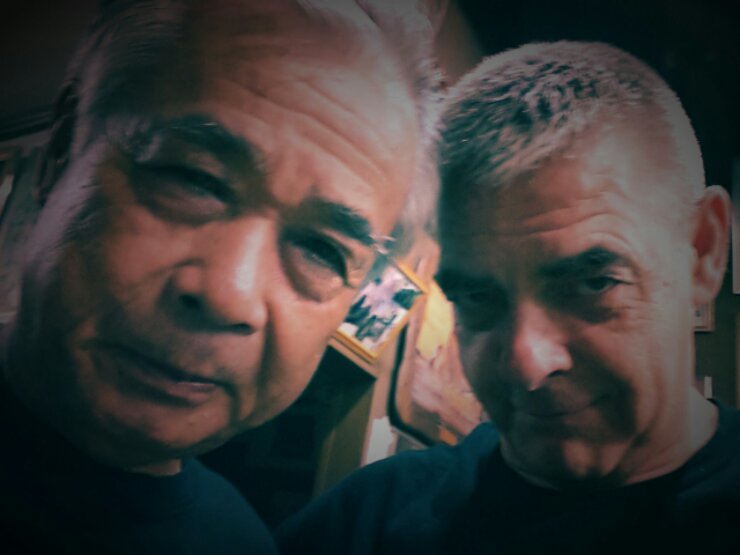Stephen Hawking said that “The greatest enemy of knowledge is not ignorance, it is the illusion of knowledge.”
Well, Wednesday night during Noguchi sensei’s class I faced the illusion of my knowledge. Everything began nicely when he said Gyokko Ryû. Then hell broke loose as he recreated the techniques totally. His big smile when he said it should have prepared me for something special.
Over the last 25 years I went through these techniques many times with him. Every high rank knows Kokû, Renyô, Gyaku nagare, Dan shu, Dan Shi, Hanebi, at least that was my feeling until Noguchi sensei reversed everything. Once again I was lost.
I will use the Kokû we did that night as an example:
Uke attacks with right fist
Tori, inside, does a circular migi age shutô to the elbow
Uke kicks with right leg after receiving the shutô
Tori then does ura Keri gaeshi with the left leg and then steps in with right foot and hit migi boshi Ken at uke’s migi butsumetsu.
For years we trained Kokû from the outside, doing it from the inside was mind blowing! This new form was very interesting and full of discoveries for me. I might already have done it like that in the past alone in my dôjô or here in Japan. But after Hatsumi sensei ‘s class of Tuesday in Ayase, it was, at least for me, like entering 範列 hanretsu, a new paradigm. Because I saw infinite possibilities of interpreting our hundreds of waza from a totally renewed approach!
When you have studied, trained, and learnt this budô for thirty years you have, more or less, seen everything. Or at least this is what your ego thinks. The reality is that the learning path is endless and that other universes of possibilities are there if you are brave enough to look for them.
Master Yoda said: “Many of the truths that we cling to depend on our point of view.” This is why I call it a paradigm as it changes totally our point of view on the art. I used the 範列 concept a few times already here in this blog because when I train here, I often have to redefine what I thought I knew (the point of view). It is easy to play the “master”, and many of us jûgodan, do that quite well… And the older you get, the easier it is. But this is the dark side of the Bujinkan.
Again as Yoda said in Star Wars:
Luke: “Is the dark side stronger?”
Yoda: “No! No…no. Quicker. Easier. More seductive.”
Remember that there is no shortcut to excellence in the Bujinkan and that it does not come with the rank. If the Bujinkan was easy it would not be worth training. But it is not difficult, either, if you are ready to get rid of your certitudes.
It is not がん蛋 Gantan (difficult for barbarians) but 簡単 Kantan (simple) if you take the good decision, “shusha dori” (取捨取) which is to come here in Japan and to train. Back home we try too hard to stick to the text and by worshiping the 貌 Katachi (the form), we lose the 感覚 Kankaku (the feeling). The kankaku can only be found here at the source of the “force”.
Sensei, in his last classes, insisted a lot on not being too much focusing on the Katachi but working to express the Kaname though the Kankaku. If you see yourself as a student of Hatsumi sensei and if you follow what your master is asking, then each time you come here you might have to redefine yourself, and change your paradigm.
If you prefer to think that you know everything already maybe you are suffering from a deep Dunning-Kruger twisted effect.*
________________
* The Dunning–Kruger effect is a cognitive bias in which unskilled individuals suffer from illusory superiority, mistakenly rating their ability much higher than average. This bias is attributed to a metacognitive inability of the unskilled to recognize their mistakes. http://en.m.wikipedia.org/wiki/Dunning%E2%80%93Kruger_effect


I don’t mean to sound like a hipster, or as if I’ve seen it all before, but hasn’t Noguchi sensei been doing Koku like that for years now? I know he keeps changing the details, but I’m quite sure he’s kept to the “inside”, as you describe it, for a while now. I actually asked him about it once, and while my Japanese is awful, what I got was the word “connected”. I don’t know if it’s what he meant, but to me it makes sense to do Koku “on the inside” if I look at the connection with the technique/waza that comes after it in the densho.
LikeLike
Read the new article https://kumafr.wordpress.com/
LikeLike
Is learning great or a constant disappointment?
LikeLike
A reblogué ceci sur LES NINJAS DU 91.
LikeLike
Reblogged this on tamontenyamashiro's Blog and commented:
Thanks for sharing your thoughts, Arnauld.
LikeLike
Hi Sensai Lou,
Even in basic old style karate kata the same move (ie. Low block) can take on different meanings. It can be a “low block” or it could be interpreted as an arm break against an opponents upturned elbow.or the same low block movement could be a pressure point attack on an easy to hit area on an opponent’s arm(to buckle his knees to set him up for the final move.
LikeLike
Read the new article https://kumafr.wordpress.com/
LikeLike
“Many of the truths that we cling to depend on our point of view.” -Obi Wan Kenobi.
LikeLike